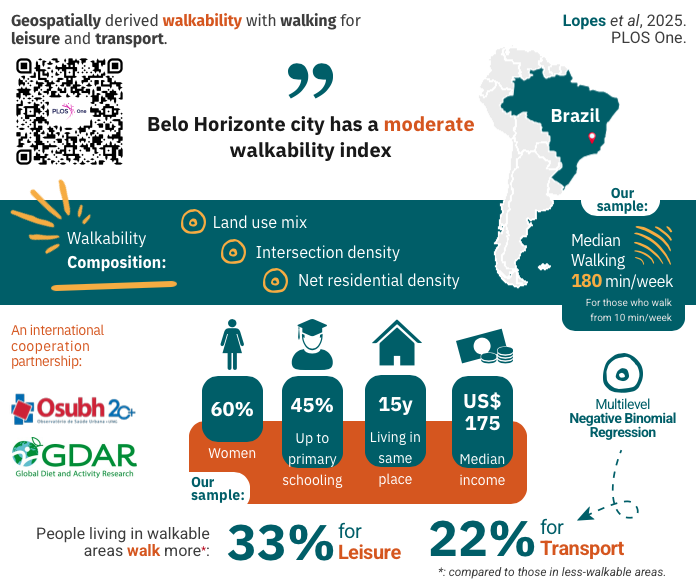Applying a globally know metric to evaluate the local walk-friendly places
Urban spaces are recognised as important determinants of health, in which changing the social, natural, and physical environment can promote healthy behaviour. While each city has local demands and priorities, a minimum level of infrastructure—safety, access, and diversity of services—is essential for people to incorporate healthy habits into their daily routines. Environmental sustainability may make cities people-centred, enabling activity-friendly living.
Walking offers community benefits, contributing 33-68% of total physical activity, while improving micro-mobility, air quality, stimulating interaction between neighbours and access to local commerce, and reducing daily journey time. Yet in Latin America and the Caribbean, only 15% of the population engages in active travel. Most urban planning remains car-centric, creating systems that prioritise driving convenience while presenting numerous obstacles to pedestrians such as long distances to access destinations, poor quality pavements, and urban insecurity.
The global movement towards walkable cities is gaining momentum, highlighting the importance of multi-sectoral integration to address the Sustainable Development Goals (SDGs). Geospatially derived walkability macroscale metrics are utilised globally, affecting behaviours like sedentary lifestyles, mental health, and physical activity. Despite the considerable range of walkability definitions, it can be described as “how walk-friendly an urban place is, ensuring pedestrian attractiveness, comfort, and safety, with efficient access to varied, convenient, and desired destinations”. It harmonises sustainable living with individual needs.

Urban health is a complex system in which several environmental attributes act concurrently. This approach, offers a more realistic view of cities, allows a systematic contextual analysis of how walkable a place can be. It is important to recognize that in many urban contexts, regardless of infrastructure, walking is not an individual’s choice but a necessity. It seems a prominent factor that a city would be compact and connected to provide environmental benefits to the population, stimulating a walking-friendly place and organically reducing car dependency.
This text above is based on a recent publication – the result of a partnership between the Observatory for Urban Health in Belo Horizonte, the Federal University of Minas Gerais (OSUBH/UFMG), Brazil, and the Global Diet and Activity Research (GDAR) network – has produced important insights into the relationship between geospatially measured walkability and actual walking behaviours.
Check out the complete version of this exciting new paper.

